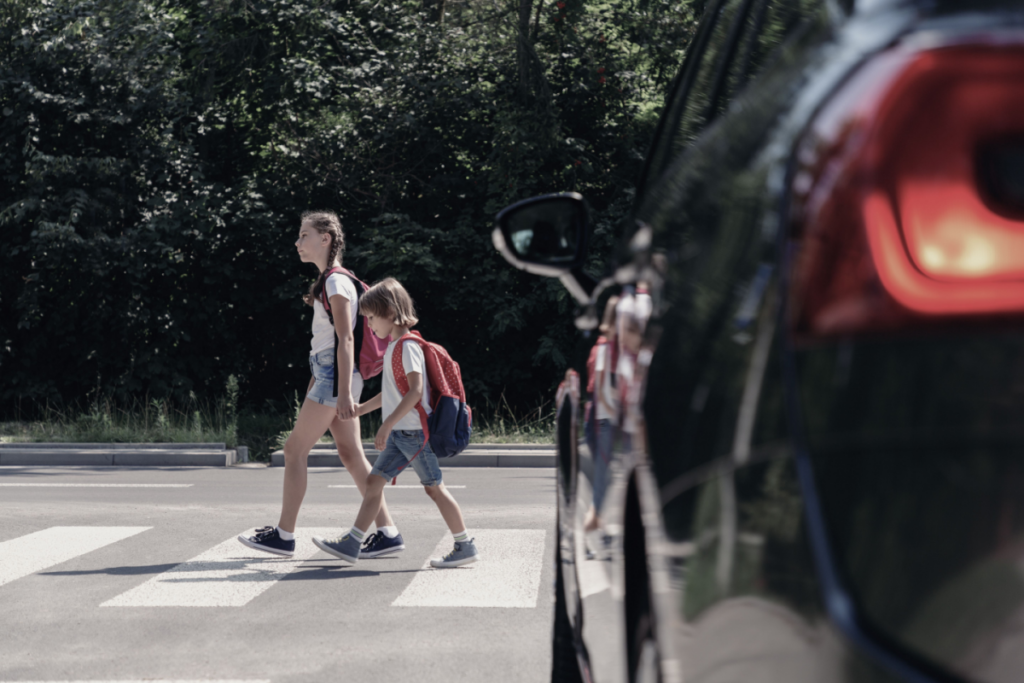Pedestrian accidents remain a significant concern in New South Wales (NSW). Common causes of pedestrian-vehicle collisions include distracted or dangerous driving, speeding, failure to stop at a pedestrian crossing, and pedestrians crossing against signals or outside designated crossing areas.
Given the risks, pedestrians must understand their rights and responsibilities on NSW roads. In this guide, we’ll outline what you need to know and what actions you may want to take as a pedestrian hit by a car.
How Legislation Currently Protects Pedestrians
According to Transport for NSW, there were over 5,000 accidents involving pedestrians between 2019 and 2023.
The law protects pedestrians, including the right-of-way in marked pedestrian crossings and the expectation that drivers will exercise due care to avoid colliding with pedestrians. However, these protections come with responsibilities, such as obeying traffic signals, using pedestrian crossings where available, and exercising caution when entering roadways.
Failure to follow these laws or protections increases the risk of a motor vehicle accident occurring and can have legal consequences. In the event of a car accident involving a pedestrian, a pedestrian’s non-compliance with road rules (contributory negligence) may affect their compensation or lead to fines.
Immediate Actions to Take at the Scene
In the immediate aftermath of being hit by a car as a pedestrian, your priority should be personal safety and medical attention. If you can move, carefully get to a safe area away from traffic. No matter how minor your injuries may seem, contacting emergency services by calling Triple Zero (000) is a good idea, especially as some injuries may not be immediately apparent. Having police and paramedics at the scene is important for medical and legal reasons.
If it’s safe to do so, remain at the accident scene. In many cases, this is a legal requirement and ensures you can gather the necessary information. As per Rule 287 of the NSW Road Rules 2014, you should attempt to exchange details with the driver involved (obtain their full name and address, vehicle registration number, and insurance information) and, if possible, take photos from your phone of the accident scene, the other vehicle involved (be it a car, truck or motorbike), and even your injuries – a picture can tell a thousand words about not only your injuries but where and how it happened.
If you’re unable to do this due to injuries, you may be able to ask a bystander or police officer to assist. This information exchange is crucial for subsequent insurance claims or legal proceedings. If the driver attempts to leave without providing details, try to note down the vehicle’s registration number and report this to the police immediately.
Reporting the Accident
Reporting an incident to the police after a pedestrian-vehicle accident in NSW is a critical first step. According to the Road Transport Act 2013, you must report car accidents involving major or minor injuries or fatalities to the police. These situations are considered serious offences under NSW law, and prompt reporting is essential for legal compliance and ensuring a thorough investigation of the incident.
There are several ways to report the accident to the NSW Police Force. For non-emergency situations where immediate police attendance is not required, you can report online through the NSW Police Force Community Portal. This method is convenient for minor accidents where all parties have exchanged details. Alternatively, you can report by phone by calling 131 444 (the Police assistance line) or at your local police station. Always call Triple Zero (000) for immediate assistance in cases of serious injury or ongoing danger. Always ask for an event number, as you will need that to make a claim for personal injury compensation. It is one of the questions in the claim form.
It’s important to note that the Road Transport Act 2013 stipulates that the timeframe for reporting accidents is within 24 hours of the incident occurring. This 24-hour window is crucial; failing to report within this timeframe could lead to legal complications. The only exception to this rule is if you were physically incapable of reporting due to injuries sustained in the accident. In such cases, you should report as soon as you are physically able to do so.
GET HELP NOW WITH YOUR PERSONAL INJURY
Get in touch with our Personal Injury Compensation team
Gathering Evidence of the Incident
The evidence you can gather in a pedestrian accident can significantly impact the outcome of any future insurance claims or legal proceedings. Evidence can include:
-Photographs of the accident scene, if you can do so safely, including the vehicle involved, any visible injuries you’ve sustained, and the surrounding area, including road conditions, traffic signs, and weather conditions. Visual records can be invaluable in reconstructing the accident and supporting your account of events.
Witness statements can provide crucial third-party accounts of the incident. Witness statements should include their accounts as accurately as possible and their names, phone numbers, and email addresses so they can be contacted later if necessary. Witness testimony can be particularly helpful in cases where there’s a dispute about how the accident occurred.
If an individual would like to claim compensation for their injuries, it will also be essential to keep evidence regarding the following:
- Medical records of all treatments and expenses related to the accident, including hospital bills, doctor’s visits, prescription costs, physical therapy sessions, and any other expenses incurred due to the accident. Any documents regarding your injuries, recovery process, and how the injuries have affected your daily life as they can demonstrate the accident’s total impact on your health and wellbeing.
- Records of any lost wages if your injuries have caused you to miss work or have been unable to return to work permanently.
Legal Rights and Compensation for a Pedestrian Hit by a Car
As a pedestrian involved in a vehicle accident in NSW you have legal protections and may be eligible to claim compensation. The primary avenue for compensation is through the Compulsory Third Party (CTP) insurance scheme, governed by the Motor Accident Injuries Act 2017.
Under this scheme, you may be entitled to benefits regardless of who was at fault in the accident.
How long do I have to lodge a claim for a pedestrian accident?
Generally, you must lodge an accident notification form within 28 days to access early treatment and care benefits, and a personal injury claim must be made within 3 months of the accident. In some circumstances, these time limits can be extended, but it’s always best to act promptly
What does CTP compensation cover if a claim is successful?
The types of compensation available under the CTP scheme can vary depending on the severity of your injuries and the circumstances of the accident. Typically, an individual may receive:
- Medical expenses: These expenses can include hospital treatment, rehabilitation, medication, and any necessary ongoing care.
- Lost Income: If your injuries have resulted in a loss of income, you may be eligible for weekly payments to cover your lost wages.
- Non-Economic Loss: In cases of severe injuries, you may also be entitled to compensation for pain and suffering, also known as non-economic loss, which is typically available only for the most serious injuries that result in permanent impairment.
It’s important to keep in mind that the amount of compensation can vary significantly based on the specific details of your case.
Seeking Legal Advice for a Personal Injury Claim
If you believe you may be entitled to compensation, contact Burke Mead Lawyers. Our team of expert personal injury lawyers experienced in pedestrian accident claims and operating across NSW, including Newcastle, the Hunter Region and the Central Coast.
Our team of professionals have helped countless individuals with their personal injury claims, including claims made for motor vehicle accidents – contact our legal experts today.
Key Takeaways
- Pedestrian accidents in NSW result from various factors including distracted driving, speeding, and failure to obey pedestrian crossings, with legal protections existing for pedestrians who have right-of-way at marked crossings, though these protections come with responsibilities such as obeying traffic signals and using designated crossings where available.
- Immediate actions following a pedestrian-vehicle accident should include ensuring personal safety, seeking medical attention regardless of apparent injury severity, remaining at the scene, exchanging details with the driver (name, address, vehicle registration, insurance information), and documenting the scene with photographs if possible.
- NSW law requires reporting accidents involving injuries to police within 24 hours through the NSW Police Force Community Portal, by calling 131 444, or at a local police station, with Triple Zero (000) reserved for emergencies; gathering evidence including photographs, witness statements, and medical records is crucial for potential compensation claims.
- Pedestrians involved in vehicle accidents may be eligible for compensation through the Compulsory Third Party (CTP) insurance scheme, with claims typically requiring submission within 28 days for early treatment benefits and 3 months for personal injury claims, covering medical expenses, lost income, and potentially non-economic losses for severe injuries.


